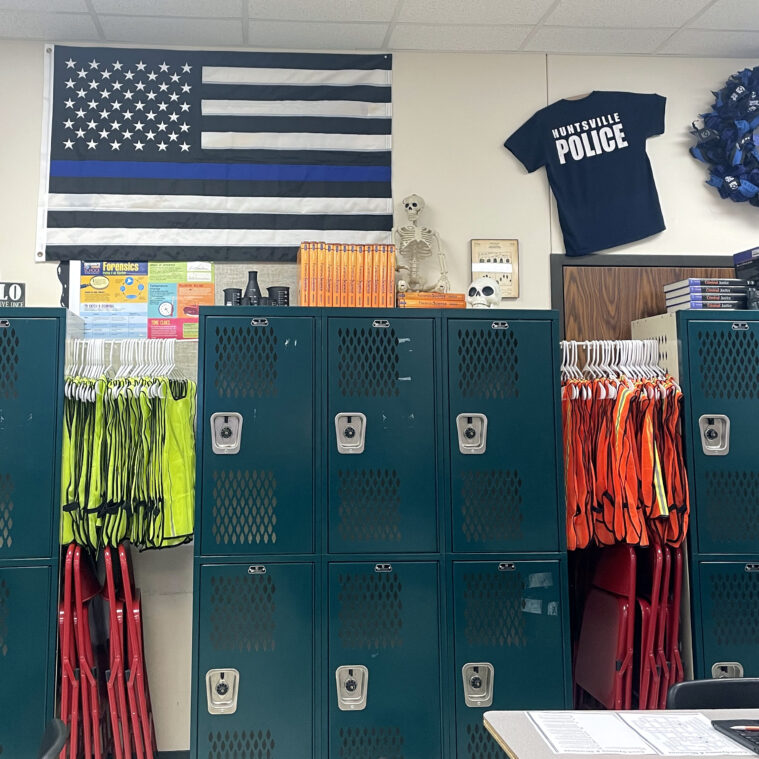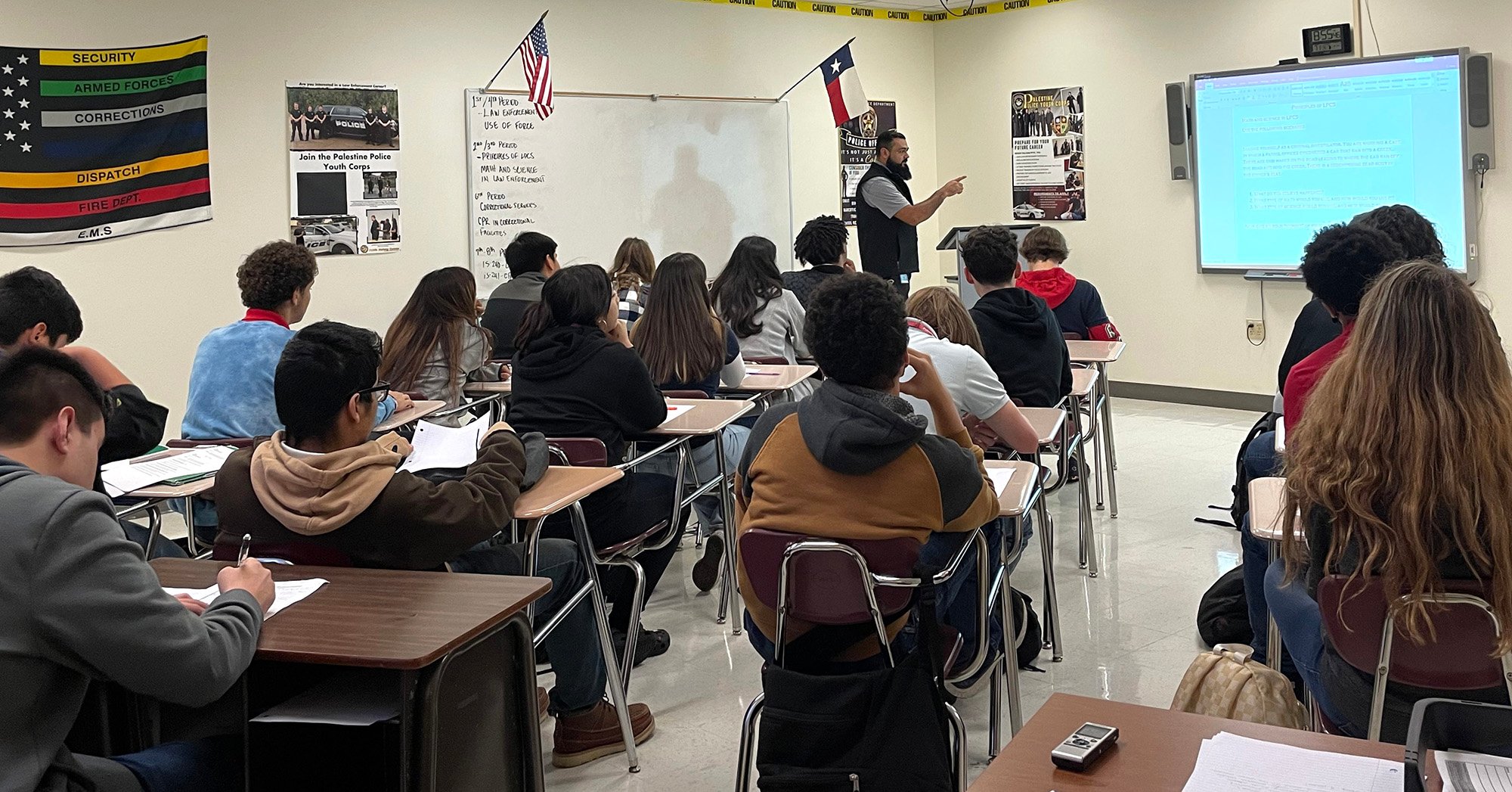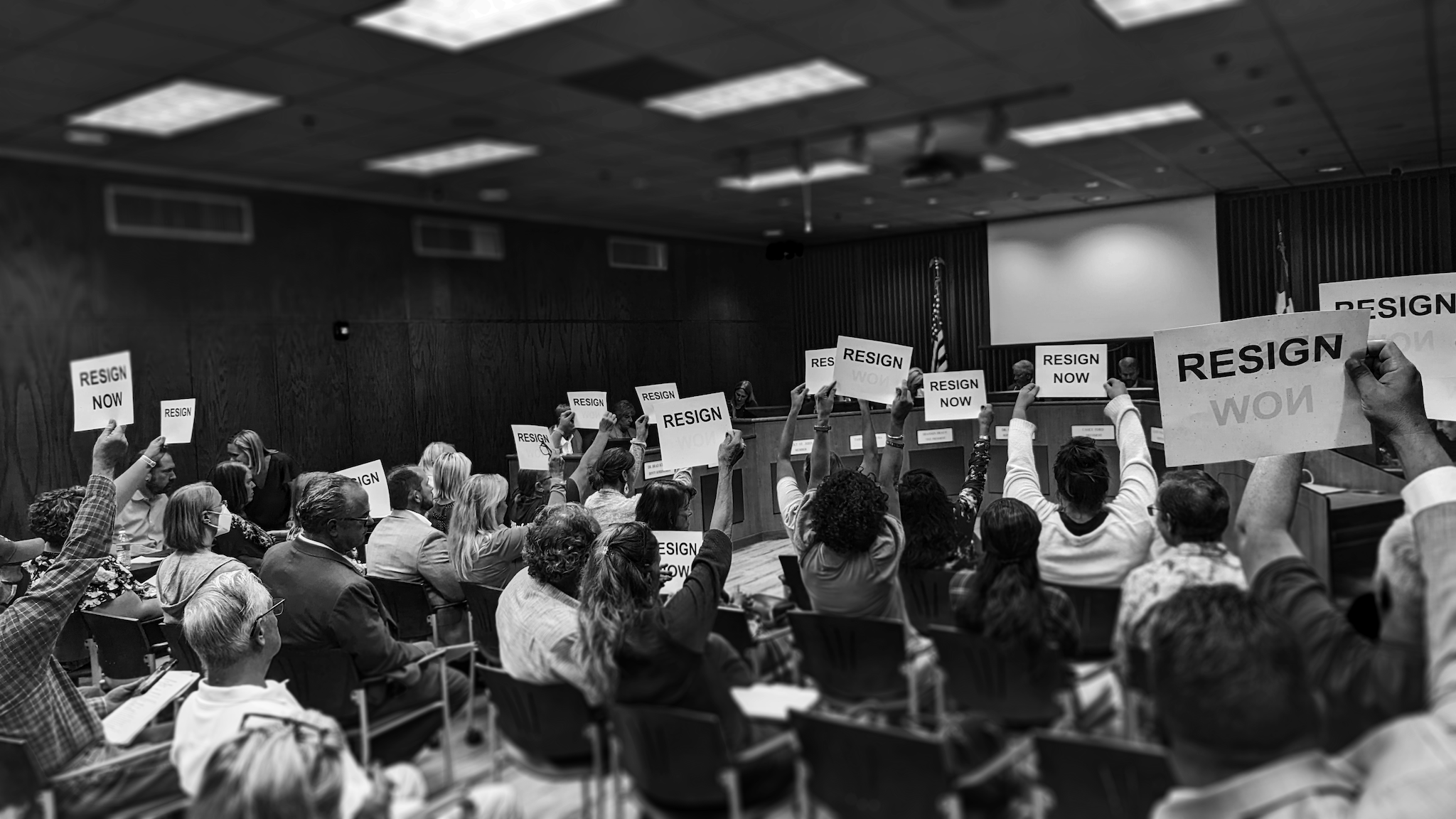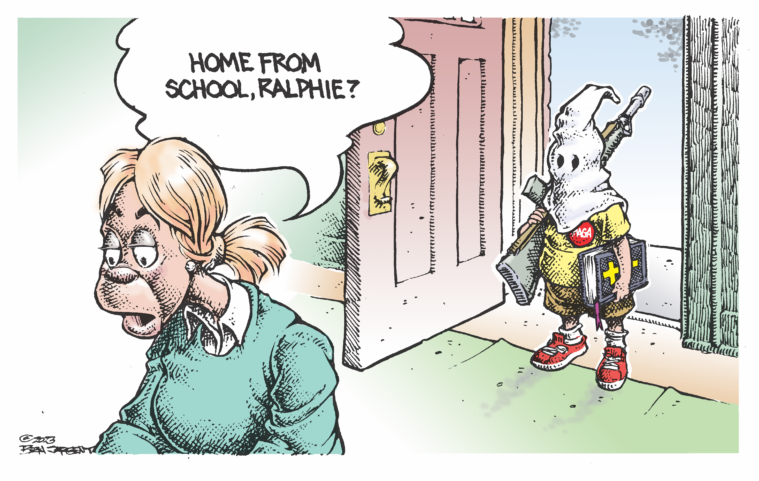This article was published in partnership with The Marshall Project, a nonprofit news organization covering the U.S. criminal justice system, and Daily Yonder. Sign up for their newsletters, and follow them on Instagram, TikTok, Reddit and Facebook.
Kiara Guley wants to be a cosmetologist when she graduates from high school next year. But after taking a training program at the public school in this rural town, the 17-year-old has a Plan B: Become a prison guard.
Hundreds of high schools across Texas offer classes to prepare students for careers in law enforcement, including corrections. This career-training program is the biggest of its kind in the country, enrolling almost 162,000 students in the school year that just ended.
Every year, more than 2,500 Texas teens take classes focused on working in prisons and jails, studying subjects that include how to restrain prisoners and administer first aid in a prison setting. The Texas Education Agency sets curriculum standards, though teachers can use additional material.
Now, the Texas prison system hopes to tap into that pool of students to help ease its severe staffing shortage. The Texas Department of Criminal Justice says that over a quarter of its 23,600 jobs are unfilled. In rural Anderson County, where Guley lives, the vacancy rate at the four state prisons is almost 50%.
So the prison department has hired a recruiter to develop relationships with high school training programs, hoping to make it easy and attractive for graduates ages 18 and older to become corrections officers. The agency “is exploring the option of establishing a pipeline for high school” students to become employees, Director of Communications Amanda Hernandez wrote in an email.

The student-to-guard pipeline Hernandez described differs greatly from the well-documented ‘school-to-prison pipeline,’ in which harsh school discipline puts some children in contact with the criminal justice system at an early age.
Critics have begun questioning whether reliance on prisons makes for good economic policies in rural areas. “Prison-based rural economic development is really uneven and dubious, and in a lot of places, it actually just doesn’t happen,” said Judah Schept, a professor at the School of Justice Studies at Eastern Kentucky University.
High job vacancy rates “suggest that these are not jobs that people really want,” he said. “Something is clearly not working.”
The Texas prison agency hires between 8,000 and 10,000 new guards each year, but has a turnover rate of 45%, said Benny Kinsey, the director of recruitment and retention. “We don’t have a hiring problem; we have a retention problem.”
The Texas agency’s effort to work with high school programs is an approach that prison systems and police departments across the country are adopting as they try to find and keep employees, said Thomas Washburn, the executive director of the Law and Public Safety Education Network, a Georgia-based nonprofit organization that supports criminal justice programs in high schools.
“It’s a massive movement,” Washburn said. “Career and technical education programs are absolutely one of the solutions.” The group says 3,500 programs serve hundreds of thousands of students nationwide.
Washburn said he has some misgivings when it comes to encouraging young people to become corrections officers. “I don’t know how to phrase this in a good way,” he said. “Corrections is a job whose challenges outweigh its benefits. It’s not a great career.”
But, Washburn said, “When it’s paying 40% better than anything else in your community, it is a viable option.”
“I don’t know how to phrase this in a good way. Corrections is a job whose challenges outweigh its benefits. It’s not a great career.”
Researchers have linked working in a prison to high rates of mental and physical health problems, including depression, post-traumatic stress disorder, substance abuse, and suicide.
In Texas, guards make between $42,000 and $51,000 a year, depending on experience, and are getting a 5% raise effective July 1. The officers earn an average of $8,000 a year in overtime, the agency says.
Huntsville, Texas’ most famous ‘prison town,’ is home to seven state prisons and the headquarters of the corrections agency. Prison-related attractions, like the Huntsville Prison Museum, draw tens of thousands of visitors a year. The museum’s collection includes manacles used to bind chain gangs, weapons carried by guards from 1848 through the present, and a gift shop selling T-shirts and handmade leather gun holsters. The electric chair known as ‘Old Sparky,’ which the state used to execute 361 prisoners from 1923 to 1964, is on display.
In Huntsville, “Everyone knows someone who is a corrections officer,” said Jordan Huebner, who went to Huntsville High School and now leads the criminal justice program there. “If it’s not your parents, it’s one of your friend’s parents. ”
The local school district and Sam Houston State University are also major local employers. But for students who want to stay in rural Walker County, in the piney woods of East Texas, the Department of Criminal Justice is “going to be your best option,” Huebner said, adding that at least 10% of her students will work in corrections in their lifetimes.
Texas is one of an increasing number of states where the minimum age to be a corrections officer is 18. Corrections “is a big pathway that we’re showcasing to the students since that is something that they can go and do as soon as they graduate from high school,” Huebner said.
The prison system “is what defines us,” said Ryann Kaaa-Bauer, a former police officer and one of the teachers at Huntsville High’s training program. The school has a set of dummies and batons to train students in use-of-force, as well as a collection of mock weapons and utility belts modeled after those carried by police officers.

The students’ favorite activity? “Oh my gosh, the students love handcuffs,” Kaaa-Bauer said. “And I mean that in the most positive and educational way possible.”
Students must “demonstrate self-defense and defensive tactics such as ready stance and escort positions, strikes, kicks, punches, handcuffing, and searching,” according to state guidelines. They also study topics including the mundane day-to-day tasks it takes to run a prison (efficient food service, good communication and organizational skills) and responding appropriately during “hostile situations.”
The corrections course taught at Huntsville includes units on prison intake procedures, searches and shakedowns, offender rights and services, and prison gangs, according to Huebner and Kaaa-Bauer. Last school year, the program included three prison tours, and a trip to the Huntsville prison museum for a final exam in the form of a scavenger hunt.
In 2023, states will receive $1.4 billion in federal funding to support career and technical education programs in 16 fields, including agriculture, information technology and health science.
Law and public safety programs can include classes on law enforcement, corrections, criminal investigation, legal systems and firefighting. In Texas, the most popular class is forensic science, including techniques used by crime-scene investigators.
“Oh my gosh, the students love handcuffs. And I mean that in the most positive and educational way possible.”
Several students in the Texas programs said they were interested in careers like police officer, lawyer, or criminal psychologist, rather than in corrections.
“It’s not something I would do,” said 16-year-old Rodney Harper, who took a law-enforcement overview class in Palestine. “They work with criminals every day and their lives are in danger, and they don’t get paid nearly enough.”
And even those who do leave the program with an interest in working as a guard may not stick with the job.
Andrew Mireles graduated from Huntsville High School’s criminal justice program in 2021, and, inspired by a guest speaker, applied for a position at the Walker County jail when he was 18, he said. He worked there for a year before quitting to enlist in the Army.
He said he plans to return to the criminal justice field — but he doesn’t want to work in a jail or prison again.
“After a while, I started to dread it,” he said in an interview. “You don’t want to go there. You’re working 12 hours, and it’s just very depressing.”



